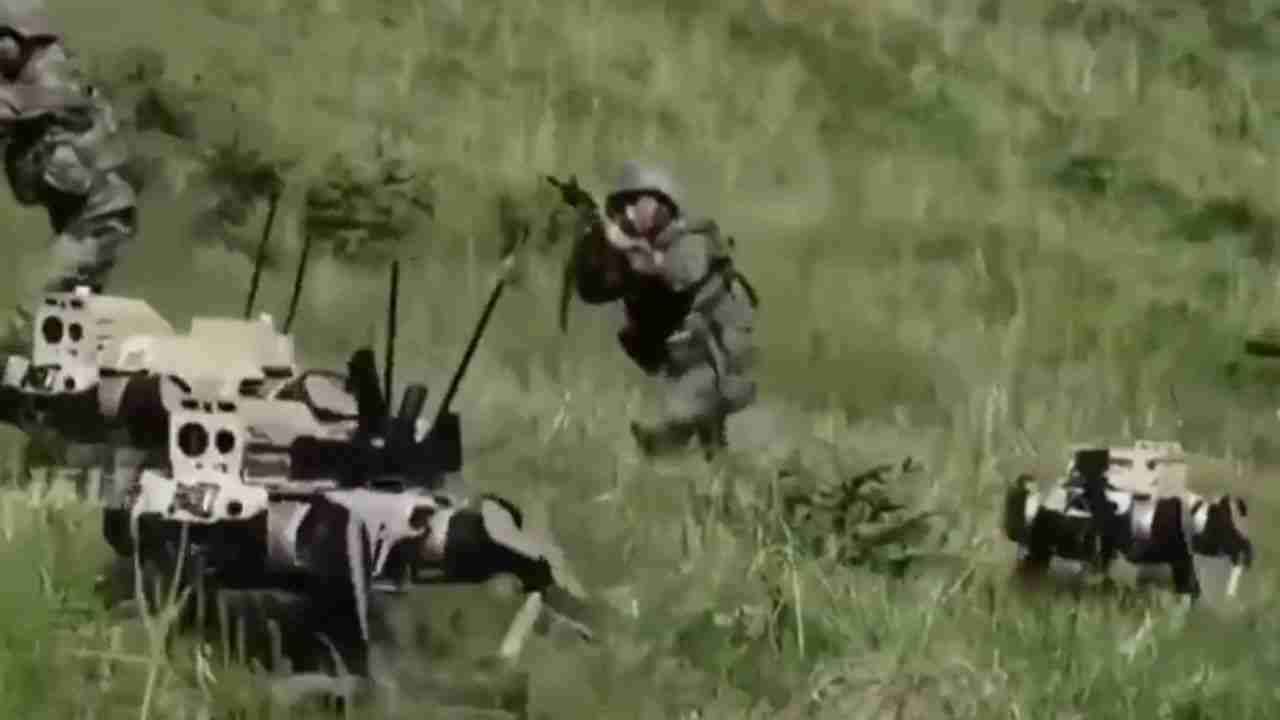Integration of Unmanned Systems in Modern Combat
The Chinese military has recently conducted a series of advanced training exercises aimed at enhancing the coordination between human soldiers and unmanned systems. These operations are part of a broader strategy to modernize combat capabilities and integrate cutting-edge technology into battlefield tactics.
During the drills, the People’s Liberation Army (PLA) employed First Person View (FPV) drones and armed robotic dogs, which were used in various offensive roles such as reconnaissance, fire support, and breaching enemy defenses. The use of these technologies marks a significant shift in how modern warfare is being approached, with an increasing emphasis on automation and remote control.
Innovative Deployment Techniques
One of the most notable aspects of the training was the unconventional method used to deploy the FPV drones. Instead of using traditional launch mechanisms, soldiers threw the drones into the air before guiding them toward their targets. This approach demonstrates a level of adaptability and practicality that could be crucial in real combat situations where time and resources are limited.
The robotic dogs, which made their debut at the Airshow China in 2024, played a critical role in the exercises. These machines were used for transporting ammunition, navigating obstacles, and serving as mobile platforms equipped with weapons. They operated directly alongside infantry units, showcasing their potential as versatile assets on the front lines.
Expanding Use of Robotics in Warfare
The deployment of robotic systems on the battlefield is not entirely new. In 2024, a robotic dog fitted with a rifle was tested during joint exercises with Cambodia. This demonstrated the PLA’s willingness to experiment with autonomous and semi-autonomous weapons in real-world scenarios.
This year, during the “Golden Dragon 2025” exercise, the Chinese military further integrated technology with light weaponry by attaching a QBZ-95 rifle to an aerial drone. The drone provided cover for ground troops, highlighting the growing synergy between manned and unmanned forces in modern warfare.
Strategic Implications
The continued development and testing of military robotics reflect China’s increasing investment in automated tactics. As global militaries explore the potential of artificial intelligence and machine learning, China is positioning itself as a leader in this evolving field. The integration of drones and robotic systems into combat operations not only enhances operational efficiency but also reduces the risk to human soldiers in high-threat environments.
These advancements suggest a future where unmanned systems play a central role in both offensive and defensive strategies. With ongoing research and development, the PLA is likely to continue refining its use of robotics, potentially setting new standards for military innovation worldwide.
Ongoing Evolution of Military Technology
As the use of robotics becomes more prevalent, it raises important questions about the ethical implications and long-term consequences of relying on autonomous systems in warfare. However, from a strategic perspective, the benefits of integrating these technologies are clear. They offer greater flexibility, improved situational awareness, and the ability to operate in environments that may be too dangerous for human personnel.
With each new exercise and technological breakthrough, the Chinese military is pushing the boundaries of what is possible in modern combat. The focus on unmanned systems and automation is not just a trend but a fundamental shift in how wars are fought and won.







